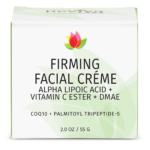Phospholipids
Phospholipids are a class of lipids that are a major component of all cell membranes. They can form lipid bilayers because of their unique structure, which includes a hydrophilic (water-attracting) “head” and two hydrophobic (water-repelling) “tails”. The hydrophilic head is typically a phosphate group, and the hydrophobic tails are long fatty acid chains. This amphiphilic nature (containing both hydrophilic and hydrophobic parts) allows phospholipids to form the basic structure of a cell membrane, providing a barrier that separates the cell from its external environment.
Phospholipids are not just structural elements; they play critical roles in cell signaling, recognition, and transport processes. They can act as precursors for signaling molecules, participate in the activation of signaling pathways, and regulate the fluidity and flexibility of cell membranes, which is vital for the function and survival of cells in various physiological environments.
In addition to their biological roles, phospholipids are used in various industrial and pharmaceutical applications due to their emulsifying, wetting, and stabilization properties. They are key ingredients in the formulation of liposomes for drug delivery systems, serve as emulsifiers in cosmetics and food products, and are used in manufacturing processes for their surfactant properties.
Given their wide range of functions and applications, phospholipids are of significant interest in many fields, including biochemistry, medicine, nutrition, and materials science, highlighting their importance in both biological systems and industrial applications.
Phospholipids are a class of lipids whose molecule has a hydrophilic "head" containing a phosphate group and two hydrophobic "tails" derived from fatty acids, joined by an alcohol residue (usually a glycerol molecule). Marine phospholipids typically have omega-3 fatty acids EPA and DHA integrated as part of the phospholipid molecule. The phosphate group can be modified with simple organic molecules such as choline, ethanolamine or serine.[citation needed]


Phospholipids are a key component of all cell membranes. They can form lipid bilayers because of their amphiphilic characteristic. In eukaryotes, cell membranes also contain another class of lipid, sterol, interspersed among the phospholipids. The combination provides fluidity in two dimensions combined with mechanical strength against rupture. Purified phospholipids are produced commercially and have found applications in nanotechnology and materials science.
The first phospholipid identified in 1847 as such in biological tissues was lecithin, or phosphatidylcholine, in the egg yolk of chickens by the French chemist and pharmacist Theodore Nicolas Gobley.









